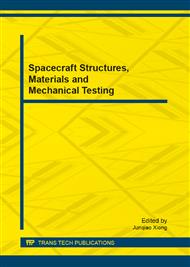p.3
p.9
p.15
p.21
p.25
p.31
p.41
p.47
Comparison of the Models to Predict the Effective Young's Modulus of Hybrid Composites Reinforced with Multi-Shape Inclusions
Abstract:
In this paper, two kinds of micro-mechanical models are utilized to predict the effective Young's modulus for hybrid composites including fiber-like, spherical and needle inclusions in an isotropic matrix. The two models of Multi-Phase Mori-Tanaka Model (MP model) and Multi-Step Mori-Tanaka Model (MS model) are proposed by the authors in a series of interrelated research. The results show that the shape and the Young’s modulus of inclusion, aspect ratio of fiber-like inclusion are the controlling factors to influence the Young's modulus, and MP model is more rational to predict the effective Young’s modulus of hybrid composites reinforced with multi-shape inclusions.
Info:
Periodical:
Pages:
15-20
Citation:
Online since:
February 2013
Authors:
Price:
Сopyright:
© 2013 Trans Tech Publications Ltd. All Rights Reserved
Share:
Citation:


